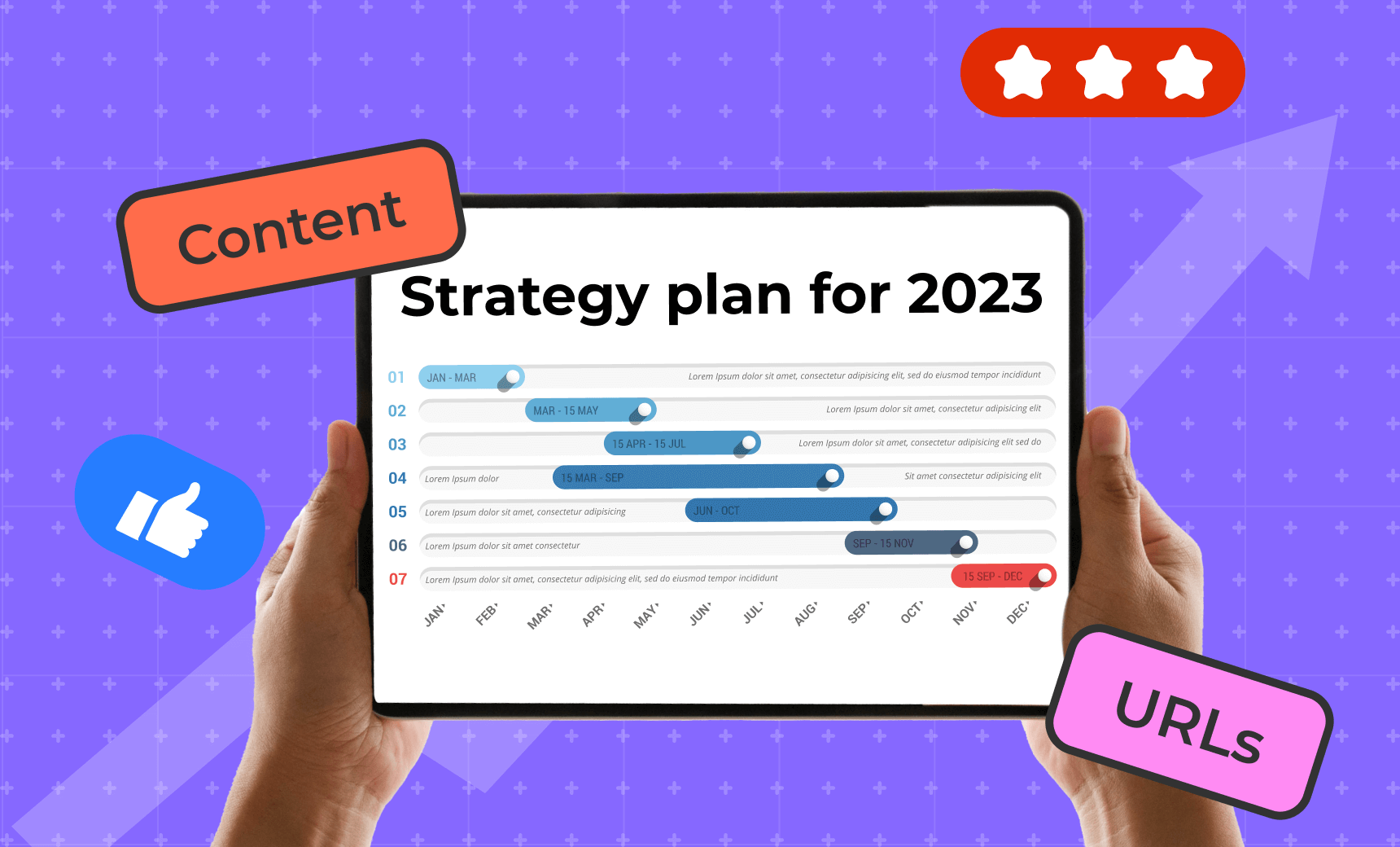Table of contents
The word “strategy” comes from the Greek word “strategos,” which refers to the leader of an army. The word comes from the war plans that leaders formed. The generals would then use these strategies to lead their ranks to victory.
While we don’t use strategy in the same context now, there’s a lot we can learn from its roots. Affiliate marketing can feel like a battle front at times. There are enemies all around, and your life is on the line.
If you don’t fight hard enough, you get injured in battle. Just like if you don’t work hard enough each month, your income is damaged. If your enemies are stronger, they will take all the victory from you. That’s why publishers employ smart affiliate marketing strategies.
An effective affiliate marketing strategy is the difference between making rent or not. Affiliate marketing strategies are like warriors training for battle. The more the warriors train using them, the stronger they become. Keep reading to see the top affiliate marketing strategies publishers can train with!
What is Affiliate Marketing?
Affiliate marketing is a web-based business strategy that publishers use to make money.
Affiliate marketing refers to any affiliate program that pays publishers to advertise.
There are various ways to market affiliate content, as well as many ways you could be paid.
Publishers are paid based on the number of user actions they generate monthly.
The most common affiliate marketing user actions include:
- Clicking on affiliate links;
- Buying products or services;
- Software installs;
- Subscription or membership purchase;
- Signing up for emails or newsletters;
- User referrals using your links;
- Sharing content with other users.
Most affiliate marketing happens through the cost-per-click commission model. This refers to a set price per user click on a publisher affiliate link.
Other commission models you’ll come across include:
- Cost per thousand views;
- Cost per Action / Sale / Lead;
- Cost per Install;
- Cost per Engagement;
- RevShare.
Some affiliate partners also opt for a set commission amount each month. The publisher advertises an agreed-upon amount monthly. This can be anything from articles to social media posts, and even graphic adverts.
The commission rates and user actions are stated in an advertiser’s terms and conditions. Each publisher must agree to their partners’ T&Cs before any work is done.
If you’re looking for brands to partner with, go through Admitad platform.
The Admitad Partner Network is a great way to connect with many popular brands in one place. Admitad also offers publishers extra tools and tracking systems that make marketing easy.
Through Admitad, publishers can even make their own standard and deep links. Standard links are great for sending users to the brand’s home page. While deeplinks send users straight to content and product pages.
Admitad also has a Store where you can browse through all the available advertisers. Once you’ve gotten the hang of promoting your initial advertiser, you can start marketing for other brands like:
- Shein;;
- NordVPN;;
- Adobe;;
- Kinguin;;
- CanvasChamp;;
- Maxmilhas;
- Shutterstock.;
- Fivver;
- Hostinger;
- Opera Browser;
- Booking.com;
- AliExpress.
Types of Affiliate Marketing Strategies
Within affiliate marketing, there are three strategies that publishers use to promote products.
The types of affiliate marketing strategies are:
- Uninvolved affiliate marketing;
- Related affiliate marketing;
- Involved affiliate marketing.
Uninvolved marketing is when the publisher is not related to the products at all. These publishers advertise other reviews and are not liable for any product issues.
Related marketing has some knowledge of the products from the publisher’s side. The connection is made through the publisher’s selected niche. While the publisher hasn’t used these products, they specialize in the product’s niche. They have a better understanding of the products and provide more valid recommendations.
Involved marketing is the most intense type of product advertising. These publishers must have a hands-on understanding of the products they’re selling. Publishers must have used the products themselves for an extended length of time (or at least have a deep knowledge of it).
Their recommendations are the most reliable in the industry. However, if anything goes wrong with a product, they are the most liable.
What are the advantages of affiliate marketing strategies?
There are many benefits for publishers when they use strategies for affiliate marketing:
- Quick income build-up;
- Larger audience reach;
- Content of great quality;
- More trust and transparency with users;
- A strong marketing base.
The more strategies you instill in your work, the more you stand to earn monthly!
Best Affiliate Marketing Strategies
Below, we’ll unpack some examples of affiliate marketing strategies.
While these are reliable affiliate marketing strategies, they are not set in stone. Your job as a publisher is to mix and match until you find a strategy that works for you.
These are only guidelines for you to make your own strategy.
Just as a leader has to make his own strategy for his army going into battle, publishers must do the same. If publishers copy others’ strategies, it won’t be perfect for them. It will still work, but it won’t earn you as much as it possibly could!
With that said, take a look at these affiliate marketing strategies for beginners:
- The power of a niche;
- Coupons, vouchers, and promos;
- Marketing across many platforms;
- Influencers and collaboration;
- Peak shopping time and trends.
Whether you use one or many of these strategies, make sure to put in the right effort. If you do it half-heartedly, you’re only cheating yourself.
The Power of a Niche
The first affiliate marketing strategy revolves around the niche you select. Publishers select the niche they want to promote with caution. Each niche has varying audience reaches and possible rates. Even the products within each niche are used in certain ways to build income.
Most publishers start off with a list of possible niches they have a passion for. These can be based on your skills and hobbies.
Publishers often earn more in niches that they personally enjoy. Once you’ve got a list of potentials, you can look at the following niche factors:
- Target audience;
- Potential reach;
- Content and product selection;
- Commission rates;
- Competitors;
- Personal income goals.
The main factor in choosing a niche is based on how much you want to make every month. The more liked or unique the niche, the more potential income. The more common a niche is, the lower the income will be.
Each niche has a completely different audience. Take a look at some of your possible users’ reviews and comments when deciding on a niche. The same goes for the types of products and contents you could be advertising.
If you don’t like the people you have to promote to, look for a new niche. If you feel you’ll get bored of your affiliate products and content after a few months, change your niche.
The niche you choose defines your entire affiliate career. Make sure you’re ready to commit to it before signing up with any affiliate partners!
Coupons, Vouchers, and Promotions
Between coupons, vouchers, and promo codes, you have a few affiliate marketing strategies! Publishers use this strategy as an incentive for users.
Most viewers need a good enough reason to choose your products and content over others’.
What else could be more appealing than a high-quality product at a discounted price? Who doesn’t feel special when they’re given a “secret” promo code that lowers a product’s price? Promo codes can almost feel like magic!
Promo codes are the most common type of affiliate discount. Just as with affiliate links, each promo code is linked to a specific publisher.
A promo code is usually a single word made of various capital letters or numbers. Some promo codes use simple words like “DISC23” or “ECO99”.
Coupons offer a special deal to potential customers. Many publishers use coupons when promoting affiliate products to new viewers.
Vouchers are saved for loyal customers or viewers who have earned rewards. This can be a once-off discount or a loyalty card that can be used more than once.
Cross-Platform Marketing
A common affiliate marketing content strategy is to promote content across many platforms. This should be part of all affiliate marketing strategies used online.
Publishers bruise their income when they limit the number of platforms used.
Out of all the platforms online, here are the ones most used by publishers and content creators:
- Websites and blogging;
- Posting videos and live streams;
- Social media;
- Podcasts and radio stations;
- Marketplaces;
- Online ecommerce stores;
- Email marketing.
Every one of these platforms has its own method to monetize content. All of the above can be monetized through your unique affiliate links and advertisements.
Include as many links as you can without overwhelming users!
If you’re still looking to further monetize your content, try a platform called ConvertSocial.
ConvertSocial allows content creators to monetize their social media or messaging app accounts. ConvertSocial doesn’t have set monetization requirements like many social media networks!
ConvertSocial is a worldwide platform that monetizes any of the following networks:
The more platforms and content you monetize, the bigger your income will be. If you’re happy with the income you have, you can stick to fewer platforms!
Influencers and Collaboration
The best affiliate marketing strategy involves influencers or collaboration.
If you haven’t heard of influencers or collaboration, where have you been?
Influencing is the future of advertising. Why should businesses waste time creating professional ads when there are influencers to help them out?
Influencers have the skill of persuading their audience to buy products. Influencers do this over and over while gaining their viewers’ trust at the same time.
It’s what brands have aimed to do for decades, but haven’t gotten it right like influencers.
Influencers show the human side of products and content. Influencers are honest about their content, which makes products seem unique and interesting. Influencers can even turn a flaw into a selling point!
If you’re willing to take the risk, you can become an influencer yourself. Just dust off your social skills first and then give it a shot.
For everyone else, you can simply collaborate with an influencer instead.
Collaboration refers to when publishers, influencers, and brands come together to create content.
Afterwards, they all promote it on their relevant channels. All parties involved benefit from the extra content and viewer reach.
Peak Time and Trends
Our last strategy for affiliate marketing utilizes peak shopping times and online trends. Let’s get into the specifics of when people shop online.
During which parts of the year do people shop more?
Holidays and summer time are great for advertising and promotions. Everyone is in a good mood and is looking for presents to buy.
Whether it’s Black Friday or Christmas, they’ll spend much more than they usually would.
On which days of the week do people shop more?
Reports in the US show that customers shop on the weekends much more than during the week. Friday, Saturday, and Sunday are the busiest days for online stores.
What time do people usually shop?
If you want an exact time, between 11 a.m. and 1 p.m. are the best hours to advertise.
This is because a majority of people only get around to shopping by lunchtime. Early in the morning is better for bulk purchases from companies or brands.
Beyond peak shopping times, publishers also base their strategies on current trends.
A “trend” is any word, topic, hashtag, video, image, etc. that is popular at any given moment. While vague, trends are very easy to understand and follow.
Trends change on a daily basis, though there are some that always get views.
Some classic trends include:
- Epic win videos;
- Videos where someone is embarrassed or fails;
- Cute animal and pet videos;
- Satisfying videos;
- Geometric or symmetrical patterns;
- Tutorials and “how it’s made” videos.
There are many trends that only pop up for a day at a time. It’s a publisher’s job to pick up on a trend as quickly as possible.
The sooner you get trendy content out, the more viewers will check out your account!
Conclusion
When you approach these affiliate marketing strategies, approach them as a leader.
Your content is your army.
The enemy is any other competitor grabbing for your viewers.
The victor wins the gold treasure and the chance to keep living.
If you fall in battle, you can still carry on.
We don’t live in Roman and Greek times anymore, thankfully!
That means your battle isn’t actually deadly, but it still affects your salary every month.
When you look at the work you have to do each day, remember that it’s a battle.
A battle is supposed to have challenges and difficulties. The more challenging a battle is, the better the reward is at the end!
As a publisher and content creator, you can generate revenue for your business and diversify your income sources with Admitad products.
ConvertSocial – monetization platform for influencers and content creators with instant access to 100.000+ advertisers.
Monetize your social media channel in a few clicks by joining ConvertSocial monetization platform. Create useful videos, add referral links to your description section and get a commission every time someone buys using your link.
Admitad – leverage partnerships at full scale to grow your online business worldwide.
TakeAds – leverage the power of privacy-first contextually targeted, native advertising network to reach the right person at the right time.
Boost revenues and maximize resources with Admitad.




















0 comments
Write a comment